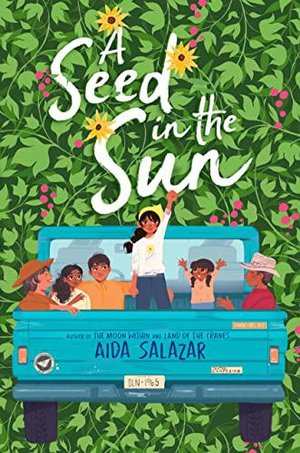Another by Christian Robinson
Springfield-Greene County Library (SGCL) places this item
within the Children's Picture Book genre.
Target audience is children ages two to six, and grade
levels preschool through third, and will be included in searches within
juvenile fiction relating to imagination, voyages and travels, cats, and
stories without words.
Another tells the story of a young girl,
inseparable from her cat, and their journey into another world! Together
they encounter doppelgangers, alternative worlds, and a whole assortment of odd
characters. Filled with adventure and fantasy, Another is
wordless - taking readers on a different journey each time they open it - what
will your adventure be?
I was initially unaware that Another was
wordless, but chose it after researching books for the appropriate age group
featuring themes involving imagination and voyages. Robinson's illustrations encourages readers to develop their own stories, creating endless
possibilities!
For this entry, I will be evaluating character, pace, and
illustrations.
The main characters are young girl and her cat, whom
initially are sound asleep until awoken by a strange sight: a red toy
mouse. Hmmm. what to do? The cat chases the mouse with the young
girl close behind - just as one would expect! Realism
mixed with alternative reality provides powerful ingredients for fun and
adventure - Robinson nudging readers beyond their comfort zones. I believe the answer to the question
regarding believability of the main characters' actions is simple: why are you
looking for your pet now?
The book's fast pacing is evident within illustrations that change with each page - one feels compelled to follow the
characters to see where they go next! From the young girl being jolted
awake and following her cat through unimaginable worlds, readers examine the
pages at comfortable paces while still taking sufficient time to enjoy and absorb. Other examples implying a fast pace include a
multicolored treadmill, stairs, bouncey ball pit, and hula hoops, simply to mention
a few!
Another's illustrations add to
the plot in an interesting manner: without words, readers must develop their
own words and BECOME the story! Illustrations provide powerful
examples of diversity and inclusion with different genders, races, interests,
talents, abilities all occurring simultaneously. For example, one the
very first page, one witnesses multicolored circles adorning the young girl's
hair - different strands attached to one head; metaphorical of numerous races
composing one society.
Nicole, R. (2021). Another book cover image.
Book Review: Another by Christian Robinson. Raising Real Readers.
Retrieved June 2, 2024, from
https://raisingrealreaders.com/book-review-another-by-christian-robinson/.
Robinson, C. (2019). Another (C.
Robinson, Illus.). Atheneum, Books for Young Readers, an imprint of Simon &
Schuster Children’s Publishing Division.











